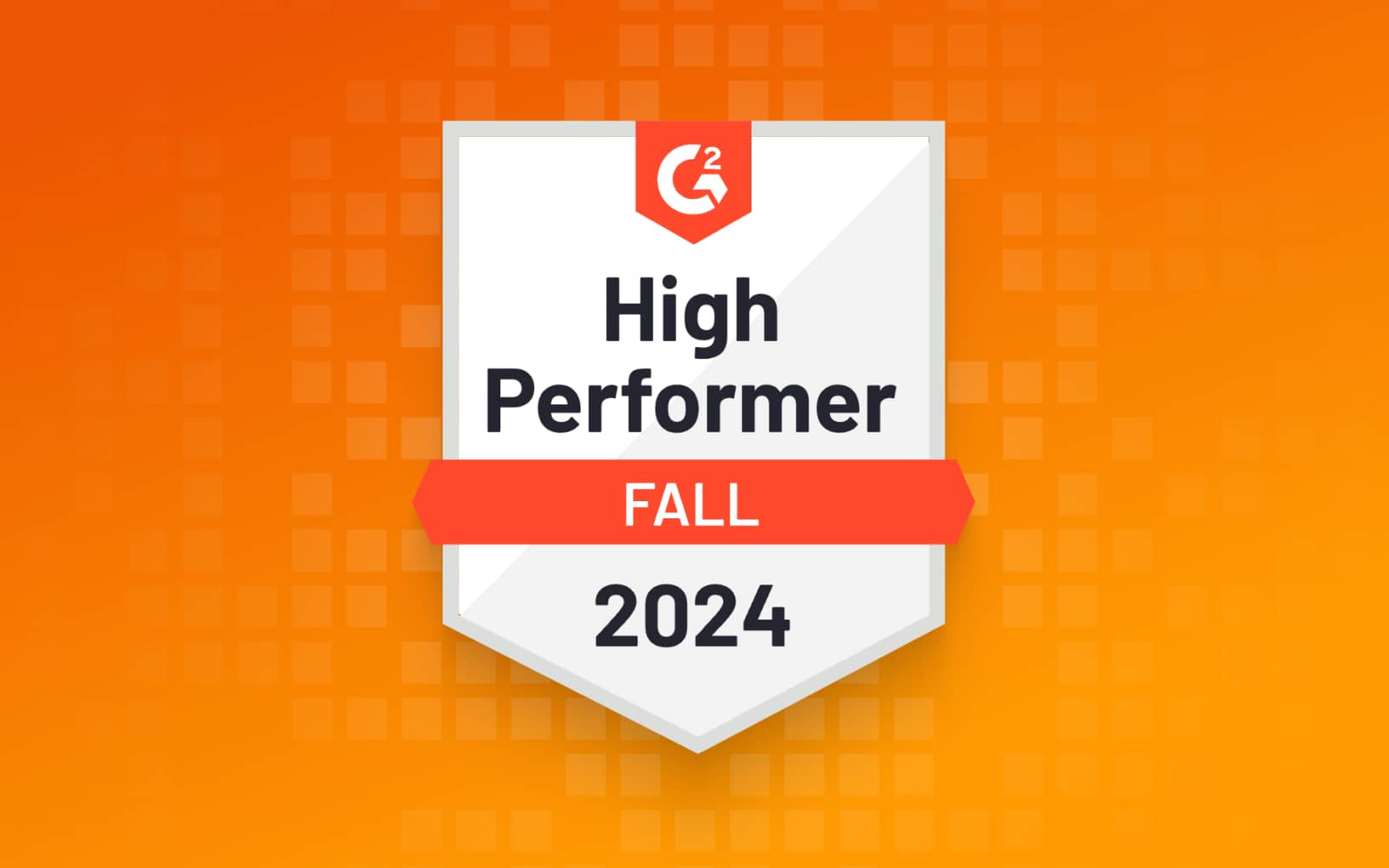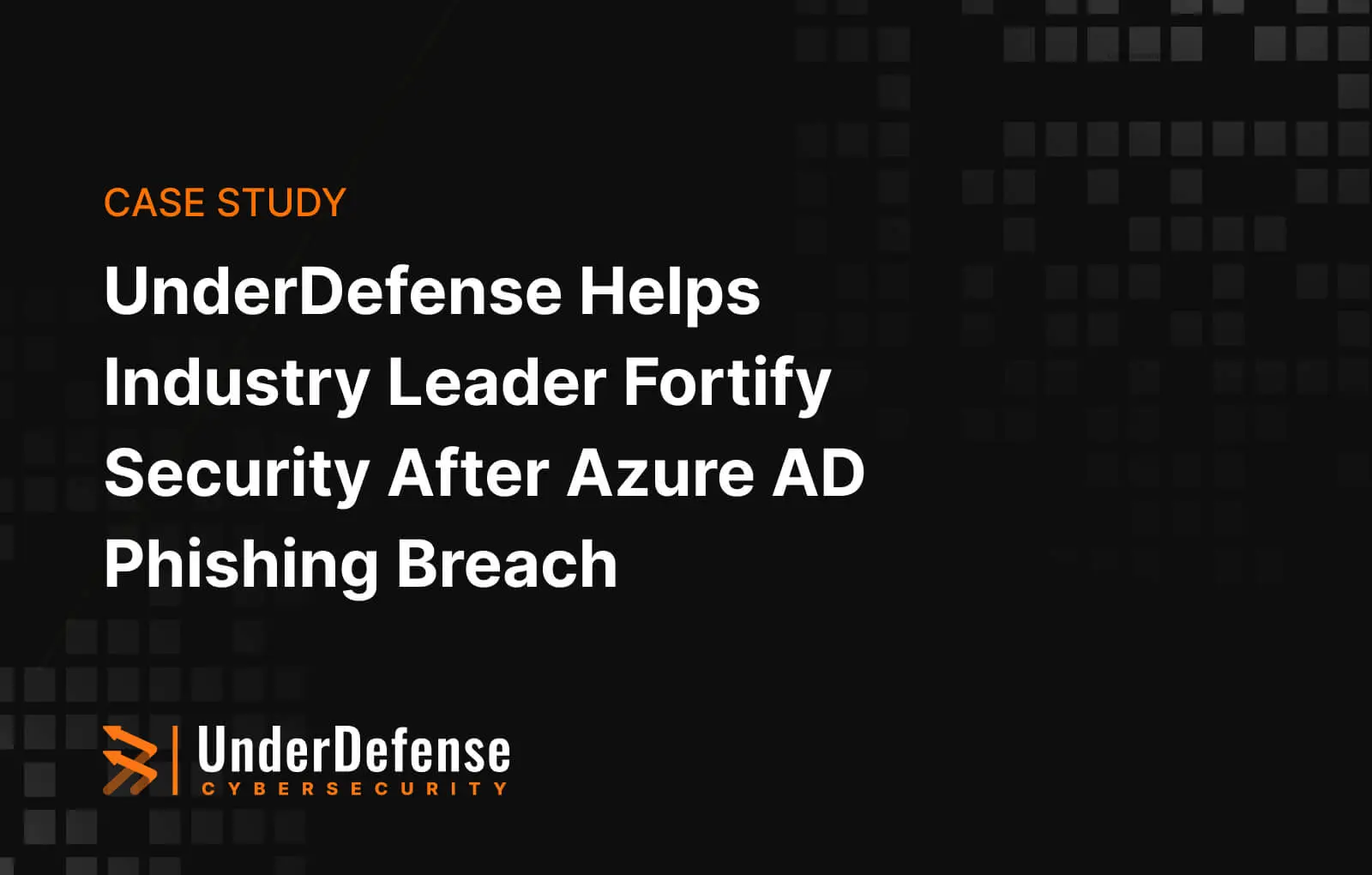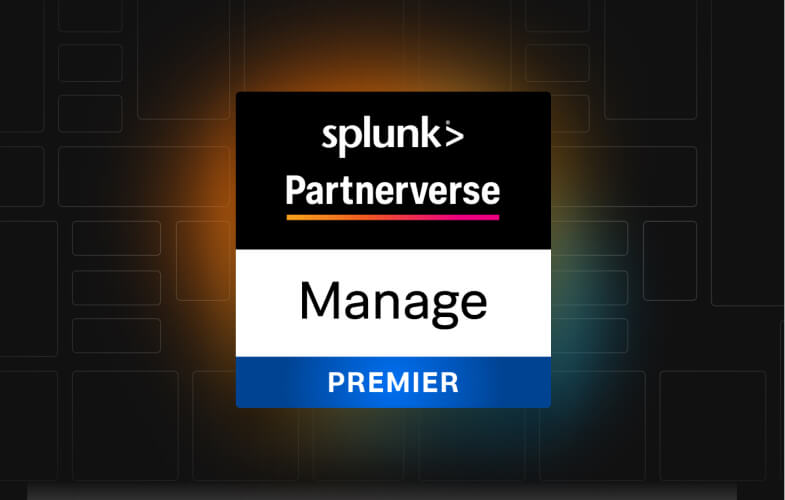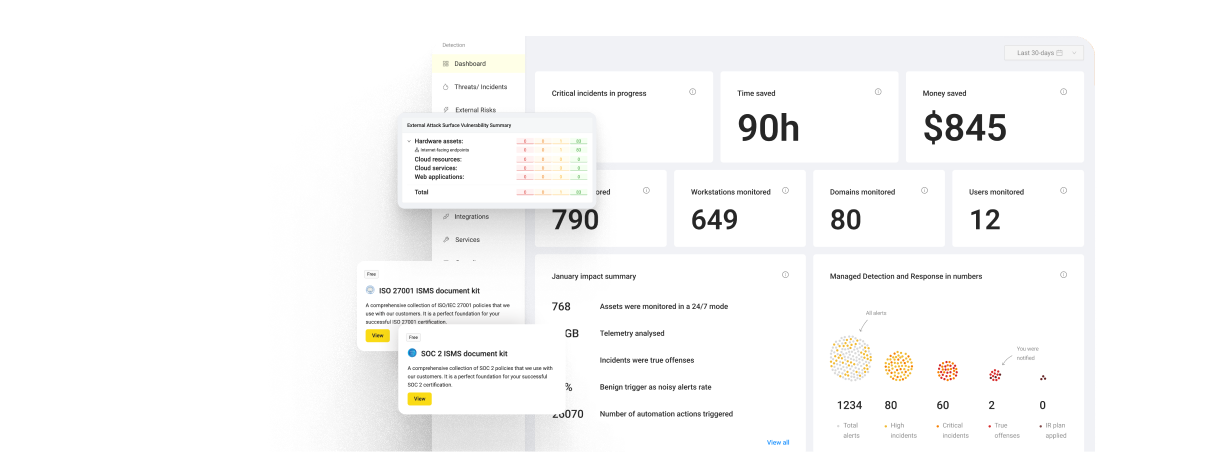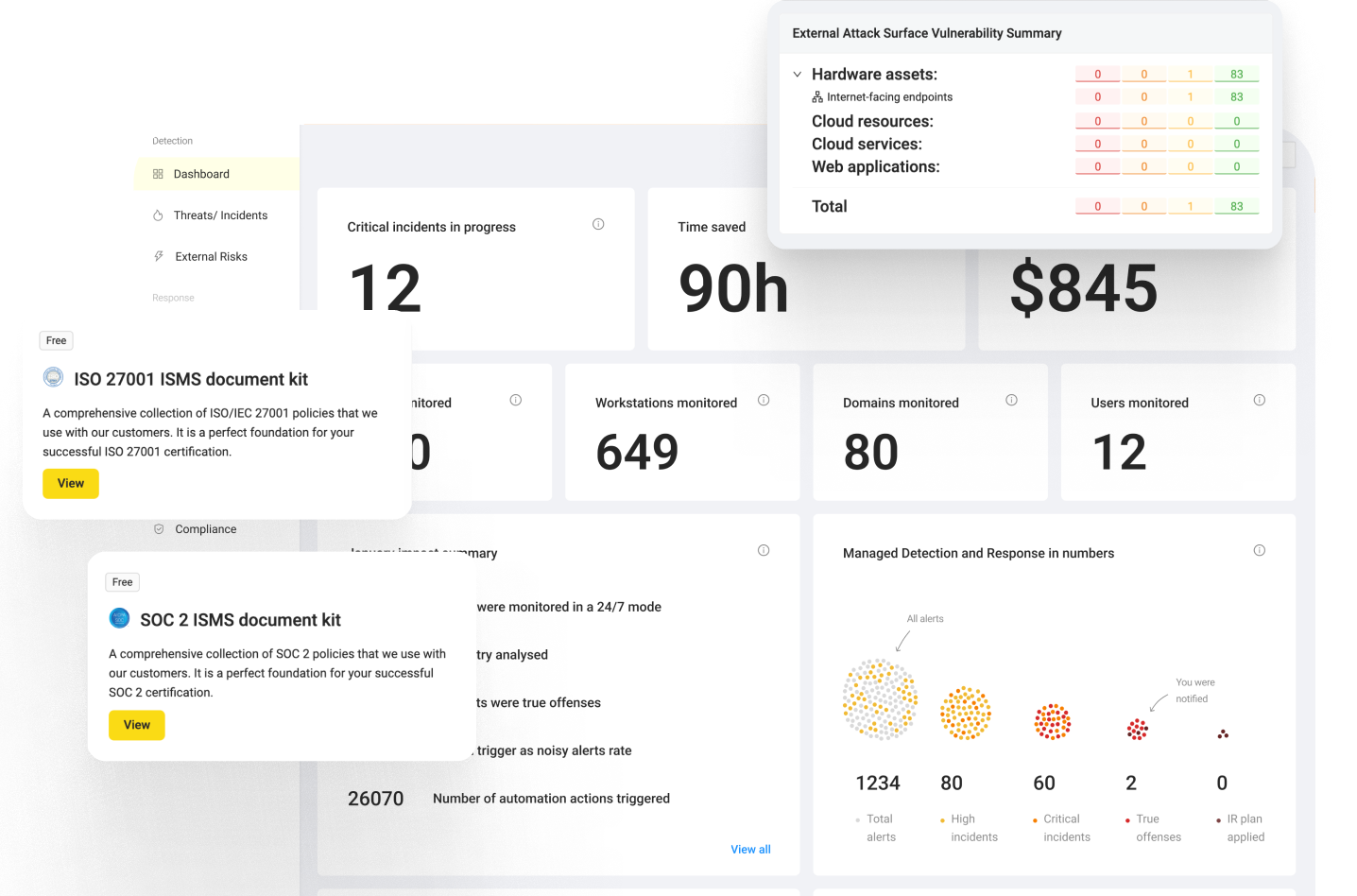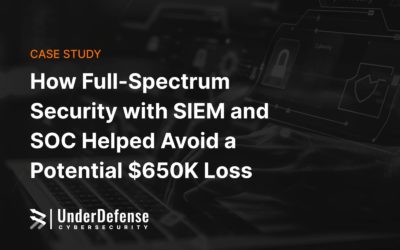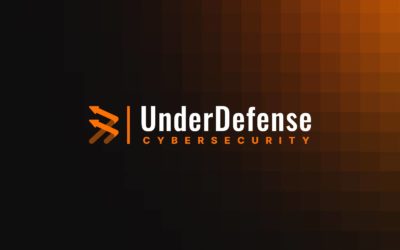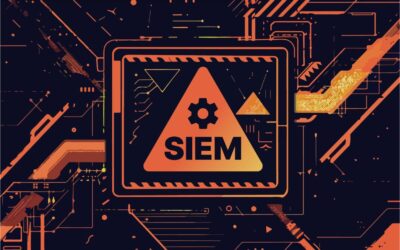Continuous Security Monitoring: A Cost-Benefit Analysis of In-House vs. Outsourced Setup
A good point I’m generously going to throw at you now is that security isn’t just about putting up walls—it’s about constantly watching the gates. With the sheer amount of data we handle now and with governments tightening up regulations on data privacy, having that ongoing vigilance over your systems isn’t just smart—it’s necessary. It’s the difference between being reactive and staying one step ahead of potential threats.
Continuous security monitoring keeps your organization from slipping out of compliance with all those frameworks and privacy laws you must adhere to. It’s like having a safety net that alerts you when something falls out of line, so you’re not stuck playing catch-up during audits.
Thus, here we will talk about the importance of setting up and maintaining continuous security monitoring, and, more significantly we will compare in-house and outsourced continuous security monitoring solutions to see which is more efficient and cost-effective for any organization.
MAXImize your cybersecurity with 24/7 security monitoring and expert response.
What is continuous security monitoring?
Continuous security monitoring (CSM) is an automated system that monitors your controls, vulnerabilities, and infrastructure in real time. It doesn’t just sit there passively—it alerts you when it detects a potential breach so you can respond before things get out of hand. It’s the proactive defense we need today, where even the best security policies can be broken with a stolen password.
Ultimately, continuous monitoring software is not just a tool—it’s a source of peace of mind. It assures you that regardless of the sophistication of an attack, you have constant surveillance over every potential vulnerability, 24/7.

Why is continuous security monitoring important?
A few big trends are making continuous monitoring irresistible:
- More sensitive data is going digital. Whether it’s customer info or employee health records, businesses are digitizing more sensitive data. That creates a bigger target for attackers, so monitoring has to keep up.
- Tougher data protection laws. Governments are introducing stricter privacy laws like GDPR and CCPA. These laws mean that keeping data safe isn’t just smart, it’s legally required.
- Breach notification requirements. Along with privacy laws, many regions now require companies to report breaches. That ups the stakes for security incidents—continuous monitoring can help stop breaches before they happen, avoiding reputational damage.
- Outsourcing risks. Companies are outsourcing more of their operations, and those vendors might also outsource to others. It adds more layers to your attack surface, increasing third- and more-party risks. Continuous security monitoring helps you stay ahead of these vulnerabilities.
How does continuous security monitoring work?
Continuous security monitoring works by constantly scanning your systems for anomalies—vulnerabilities, potential breaches, or misconfigurations in your security setup. Using intrusion detection mechanisms, it flags these issues, gathers the data, and reports back to you.
The real power of continuous security monitoring lies in its data-driven approach, which helps your SOC (Security Operations Center) stay proactive by:
- Monitoring security controls and maintaining visibility over all networks, systems, and servers across your organization.
- Сollecting and analyzing security information to stay informed on threats and their activities.
- Integrating security and risk management frameworks, ensuring they’re effectively managed.
- Running automated vulnerability scans and using the data to fine-tune your security controls.
Keep in mind that continuous security monitoring processes aren’t static. They must be regularly reviewed and updated to meet evolving regulatory requirements and keep up with the latest threats.

Beyond continuous security monitoring: SIEM for advanced threat detection & response
The more I think about it, the more I realize how much continuous security monitoring and solid SIEM (Security Information and Event Management) integration can change the game for businesses. It’s not just about keeping an eye on logs—it’s about turning raw data into actionable intelligence critical for small and large organizations.
With SIEM you’re getting a comprehensive solution that pulls data from all across your environment—cloud, on-prem, endpoints—and centralizes it so you can see the whole picture. You’re not just responding to individual events; you’re seeing patterns, correlating events, and understanding your security posture. That’s huge for reducing the noise and focusing on real threats.
One of the significant benefits I’ve seen with SIEM is how it integrates real-time threat detection with historical data analysis. It helps you not only catch threats as they happen but also dig into previous incidents to understand how they happened and how to prevent them. And, for compliance, instead of scrambling for audits, you’ve got everything right there—automated reporting that keeps you in line with regulations.

But here’s the thing: continuous security monitoring is only truly effective when a strong SIEM system powers it. Without it, you’re missing out on deep insights and the ability to predict vulnerabilities before they turn into real issues. A good SIEM sees trends and weak spots in your infrastructure, giving you a proactive edge. Trust me, with the right SIEM setup, you’re not just reacting to threats, you’re getting ahead of them—and that’s the level of security every CISO deserves. It’s about being prepared and ready for any security challenge.
Explore the common pricing models for managed SIEM to budget effectively
Cost-benefit analysis of in-house and outsourced continuous security monitoring
Here I give you a flowchart that presents two different scenarios for implementing 24/7 security monitoring in an organization—one for companies with substantial budgets and another for those with more limited resources. Let’s explore the key differences in each journey, particularly focusing on the financial implications, challenges, and overall effectiveness.
Scenario 1: in-house security monitoring & management
Here’s the first scenario: a company with a big budget decides to keep security monitoring in-house. Here’s the journey:
Steps
- Planning & Justification: The first steps involve planning and getting the budget approved by leadership. It’s a breeze in this scenario since we have no budget constraints.
- Hire a Team: You must hire an internal team of 5-12 security specialists to manage the monitoring. These specialists will set up the SIEM, a complex and resource-intensive deployment. Well, it’s not news that the recruitment process is tough and skilled professionals have high salary expectations.
According to industry averages, security professionals earn around $100K-$200K annually per employee, which adds up quickly. Hiring such a team could cost the company $1-2.4 million per year just in salaries, not counting benefits or bonuses. - Setup SIEM: Setting up the SIEM takes time and investment. Even once deployed, maintaining it, keeping it updated, and handling its complexity requires ongoing resources. Training staff to use it efficiently adds more costs.A fully functioning SIEM setup costs range from $30K to $500K, depending on the size of your organization. Ongoing maintenance, training, and upgrades are continuous expenses that can add up.
- 24/7 Shifts: Once the system is up and running, you must ensure 24/7 monitoring. It means organizing shifts for staff on weekends and nights, which adds employee costs and potentially affects sales since staff can get burnt out managing a 24/7 schedule.
- Outsourcing: Eventually, you will need help keeping the whole system in-house. Despite the sufficient budget, the challenges of maintaining a motivated team, managing the SIEM, and providing 24/7 coverage can lead to outsourcing parts of the service to external vendors.
Total Cost: In-house continuous security monitoring will cost around $2-3 million annually when you add salaries, infrastructure, maintenance, and additional staff.
Despite the high upfront cost, many companies struggle to be efficient long-term and end up outsourcing after they realize the financial and operational burden of doing everything in-house.

Scenario 2: outsourced security monitoring
In contrast, organizations with limited budgets are more likely to embrace outsourcing from the start. Here’s how the process unfolds:
Key Steps
- Planning & Justification: Just like well-funded organizations, you begin by planning your strategy and securing a budget. However, because you have a limited budget for the year, you logically decide outsourcing is the most cost-effective approach.
- Outsource: You immediately turn to a SOC as a Service provider to outsource security monitoring and management. Rather than hiring an internal team, you benefit from leveraging the expertise of external vendors specializing in 24/7 monitoring.
- Select Vendor: The selection process involves choosing a reliable vendor to fit your needs. Key factors include quality, compliance capabilities, and the ability to scale with the company’s needs.
- Onboarding and Setup: The outsourced provider quickly sets up the monitoring service, using pre-built, scalable infrastructure. They offer real-time monitoring, and their existing expertise ensures the company gets comprehensive log management without needing to invest in costly training or software.
- Track Performance: You track the vendor’s performance using pre-defined KPIs, ensuring transparency and compliance with regulations. If the Managed SOC provider meets expectations, the company can scale the service easily as their log monitoring needs increase.
Benefits of outsourcing your continuous security monitoring
Organizations with tighter budgets often outsource their security monitoring to a 24/7 Threat Monitoring Detection & Response provider or SOC as a Service company. This approach is generally far more cost-effective and easier to scale:
- Lower Upfront Costs: Instead of hiring a large internal team and investing in infrastructure, outsourcing lets you pay for just the services you need. With predictable pricing models, companies only pay for the amount of data processed or per device, which can be as low as $30-60K per year depending on the scope.
- Access to Expertise: Outsourced SOC offers instant access to specialized knowledge and resources that would otherwise be difficult or expensive to acquire internally. SOC as a service providers handle application log monitoring cloud log monitoring, network log monitoring, and so on, security updates, and incident response, allowing your team to focus on core activities without the hassle of training.
- Scalability: Outsourcing offers greater flexibility, allowing you to scale up or down as business needs change. You can easily expand the service as your data volume grows, without investing in more personnel or infrastructure.
- Reduced Risk and Time to Market: SOC as Service companies often deploy within 60 days or less, providing round-the-clock monitoring, real-time alerts, and compliance reporting. This rapid deployment reduces the risks associated with internal delays and helps protect your organization from security incidents more efficiently.

- Customized Monitoring Levels: When outsourcing continuous security monitoring, SOC service providers can offer different monitoring levels to suit your organization’s needs and budget. Each level comes with various costs, allowing you to choose the level of monitoring that best matches your security needs and budget.
While an in-house SOC offers well-controlled log monitoring and management, it comes with significant financial and operational challenges. Over time, the high upfront investment, staffing issues, and system maintenance make it financially unsustainable for many organizations.
On the other hand, SOC as a Service provides a cost-effective, scalable, and efficient alternative, allowing businesses to focus on their core operations while benefiting from 24/7 expert-level log monitoring and security. With outsourced SOC services, you can save money, improve response times, and ensure compliance without the burden of building everything internally.
UnderDefense: beyond security monitoring & management
UnderDefense’s Managed SOC, powered by the UnderDefense MAXI MDR (managed detection and response) platform, is a budget-friendly solution that gives you enterprise-grade security for a fraction of the cost of an in-house SOC. Building an internal SOC can cost $2-$7 million annually and take months or years to stand up. UnderDefense offers a fully managed SOC-as-a-Service for $11 to $15 per monthly asset, based on your organization’s size and IT environment complexity.
With UnderDefense managing a SIEM is not overwhelming. UnderDefense offers solutions that can either handle the full setup and maintenance for you or co-manage your SIEM, depending on what works best for your team.
One of the big advantages we offer is getting your SIEM up and running quickly—in 20 minutes, so you’re not left waiting for months to get your security system in place. If you already have a SIEM, we can help you optimize it to ensure it runs as efficiently as possible. The great thing is that you don’t have to choose between a full takeover or managing it yourself—we can co-manage the system with you, fitting it into your existing structure and helping it where it’s needed most.
The UnderDefense MAXI MDR platform delivers comprehensive security coverage with 24/7 detection and response, manual threat hunting, and real-time visibility across cloud and on-prem environments. It means you have instant access to SOC experts who monitor threats and respond with context-driven actions, without the financial burden of staffing an internal team.
Discover how SOC as a Service can streamline your security monitoring
The service also scales with your business, and during onboarding, tool consolidation, and fine-tuning reduces alert noise by over 82%. The UnderDefense MAXI MDR platform is not just reactive; it actively prevents incidents from occurring in the first place. Regular reports and detailed insights into every alert provide operational visibility, empowering you to make informed decisions.
At UnderDefense, we know every business is different, so we offer customizable monitoring levels to fit your needs. This tiered approach allows you to choose the right level of protection for your infrastructure and budget and get the best security at every stage.
- Level 1: Basic protection with EDR (Endpoint Detection and Response), antivirus, and endpoint security for companies looking for foundation defense against malware and endpoint threats.
- Level 2: Enhanced monitoring with EDR, email protection, and identity management. This level adds an extra layer of security to your infrastructure by protecting your endpoints, communication channels, and user identities.
- Level 3: Full protection with SIEM, custom correlation rules, SIEM management, and log/license optimization. This level offers full infrastructure monitoring, ensuring that every part of your IT environment is secure and under our watch 24/7.
Contact our SOC/MDR Director to pick your Level of security protection
UnderDefense combines human intelligence with AI to optimize security operations, reducing risk, time to market, and operational overhead.
1. What is a security monitoring solution?
Answer: A security monitoring solution continuously tracks and analyzes security events across systems to detect, respond to, and prevent potential threats.
2. What are the best continuous security monitoring tools?
Answer: Continuous monitoring isn’t just about tools—it’s about a combination of SIEM (Splunk, IBM QRadar) or/and EDR (CrowdStrike, SentinelOne). When appropriately configured by experts and monitored by humans, these tools provide comprehensive security.
3. What are the best practices for continuous security monitoring?
Answer: Use a layered approach with solutions like SIEM (Elastic, Splunk) or/and EDR (CrowdStrike). Automate where possible, review alerts regularly and ensure tools are constantly updated and fine-tuned for the best results.
4. What are the best network security monitoring tools?
Answer: NDR tools (Darktrace, Vectra) are key for network monitoring, alongside SIEM solutions (Splunk, IBM QRadar), to provide complete visibility and alert management. The right combination of tools and human oversight is essential for effective monitoring.
5. How much does continuous security monitoring setup and maintenance cost?
Answer: The cost of setting up continuous security monitoring can vary significantly. An in-house solution with tools like SIEM typically ranges from $2 to $7 million annually, factoring in staffing, infrastructure, and maintenance. For outsourced solutions like Managed SOC services, pricing is more flexible, starting around $11 to $15 per asset monthly, which can total $30K to $60K per year, depending on the scale and complexity of your environment.
6. What’s the difference between network monitoring and security monitoring?
Answer: Network monitoring is all about keeping an eye on traffic flows and ensuring your systems are functioning properly. Think of it as checking if your car’s engine is running smoothly. Security monitoring, on the other hand, is like having a security system in your car—it’s there to spot and protect you from threats, vulnerabilities, and potential attacks.
7. How is network monitoring different from SIEM?
Answer: Both can be deployed as SaaS, but SIEM takes a broader approach. Network monitoring focuses only on data flowing through the network, while SIEM tracks everything, including network traffic and activity on endpoint devices. In short, SIEM digs deeper and gives you a complete picture of what’s happening across your entire infrastructure.
- What is continuous monitoring in cybersecurity?
- Why is continuous security monitoring important?
- How does continuous security monitoring work?
- Beyond continuous security monitoring: SIEM for advanced threat detection & response
- Cost-benefit analysis of in-house and outsourced continuous security monitoring
- UnderDefense: beyond security monitoring & management
Ready to protect your company with Underdefense MDR?
Related Articles
Black Basta Ransomware Stopped in 43 Minutes: Inside a Cyber Attack Response
CASE STUDYBlack Basta Ransomware Stopped in 43 Minutes: Inside a Cyber Attack...
How Full-Spectrum Security with SIEM and SOC Helped Avoid a Potential $650K Loss
CASE STUDYHow Full-Spectrum Security with SIEM and SOC Helped Avoid a Potential $650K Loss...
